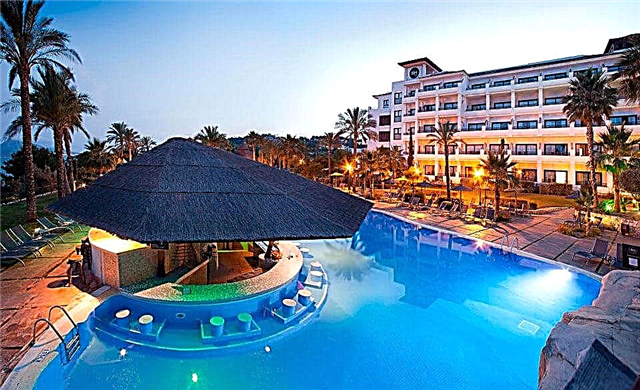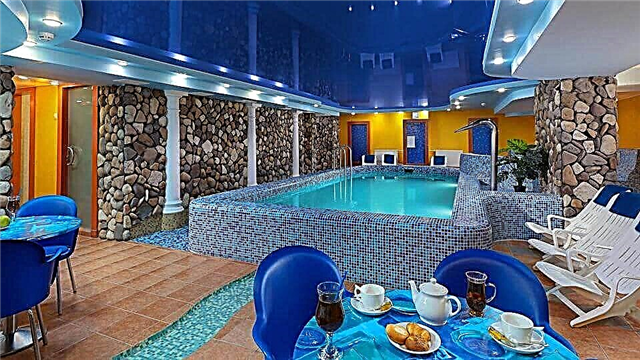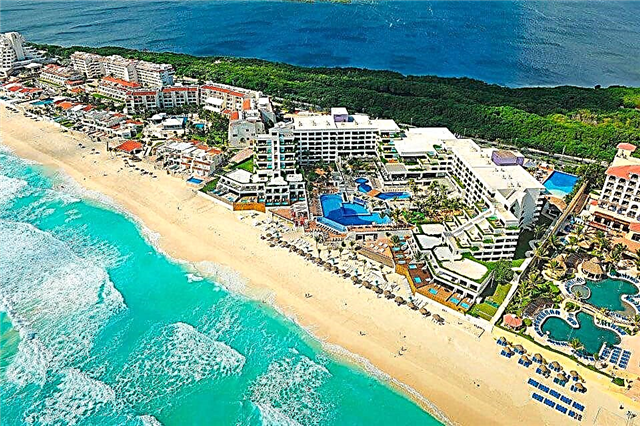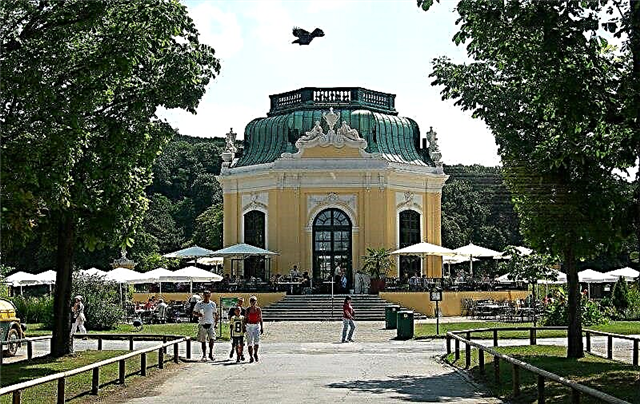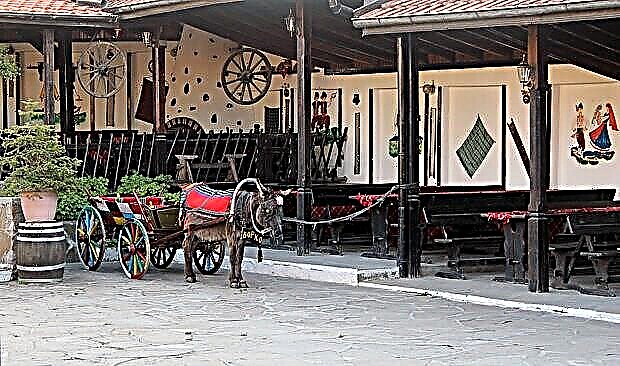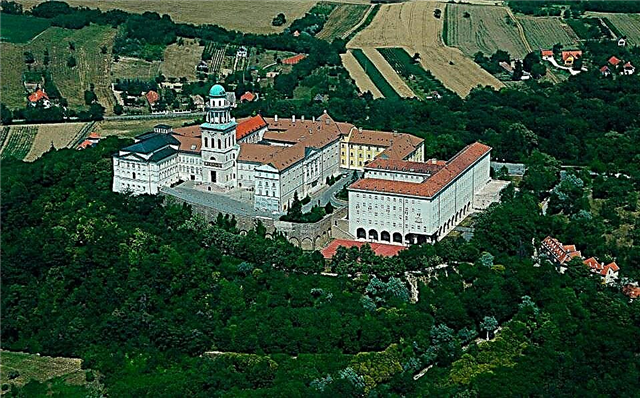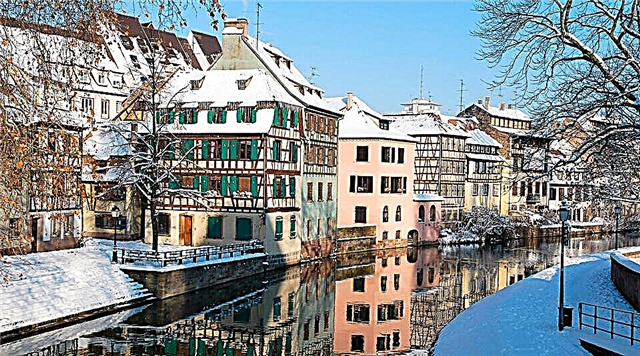Address: Russia, Moscow, Cathedral Square of the Moscow Kremlin
Start of construction: 1505 year
Completion of construction: 1508 year
Architect: Aleviz New
Coordinates: 55 ° 45'00.6 "N 37 ° 37'04.5" E
Cultural heritage site of the Russian Federation
Content:
Archangel Cathedral or St. Archangel Michael (in ancient times it had another name: "Church of St. Michael on the square"), which is part of the architectural ensemble of the Moscow Kremlin, from time immemorial was the burial vault of Russian tsars and princes.
History of the construction of the Archangel Cathedral of the Moscow Kremlin
According to all historical data, the Archangel Cathedral dates back to the 200s of the 13th century.Scientists with a high degree of confidence believe that his wooden ancestor "arose" during the time when Mikhail Hororit, the brother of Alexander Nevsky, ruled on the princely throne.... During his reign, Moscow at that time had only 2 churches, and the Cathedral of the Archangel was one of them. Khorobrit's short reign is explained by his untimely death in a battle with the Lithuanians.

View of the cathedral from Borovitskaya street
However, he was buried in the Assumption Cathedral in Vladimir. After that, almost all Moscow princes were buried only in the Cathedral of St. Archangel Michael.
Archangel Cathedral of Ivan Kalita
Already in the 14th century, a misfortune happened in Russia - a poor harvest of rye. At the same time, famine began and in order to get rid of it, Prince of Moscow Ivan Kalita vowed to build a temple. At that time, the number of churches in Moscow increased - the church of St. John Climacus, the Assumption Cathedral and the Church of the Savior on Bor. The Archangel Cathedral, built of stone, was added to this trinity. Unfortunately, historians have very little information about this temple - it is reliably known that the temple was erected in the summer of 1333, and consecrated in September of the same year.

View of the cathedral from the west
It is also known that in that church side-altars were completed, named after the saints, whose names corresponded to the names of the prince's sons: Andrew of Crete and Simeon the Stylite. By the way, the sons of Kalita were buried in the same Archangel Cathedral. It is also known for sure that in the 70s of the 15th century, the temple was replenished with two more chapels of the Resurrection of the Lord and the Apostle Aquila. These side-chapels were built of wood, and they were badly damaged during a major fire in 1475 that engulfed the entire Moscow Kremlin.
However, already in 1481, it was decided to replace the chapels of the Resurrection of the Lord and Aquila the Apostle with stone ones. Literally a year later, the reconstruction work was completed and in September of the same year the chapels were consecrated. It is difficult to say anything about the place where the renovated stone side-chapels were erected, since the location of the old wooden side-chapels is completely unknown, and even more so it is not known whether new side-chapels were built on the site of the old ones.

View of the cathedral from the Cathedral of the Annunciation
The fate of the Archangel Cathedral under Ivan III and his son Vasily III
At the end of the reign of Moscow Prince Ivan III, the Cathedral of St. Archangel Michael has become so dilapidated that the question arose about its reconstruction. The fact is that the cathedral was badly damaged by another event - a strong lightning strike in 1450. Therefore, in May 1505, Prince Ivan III Vasilyevich only has time to order to dismantle the old cathedral and lay a new one. He did not manage to live to the end of the construction, and he was buried in the new Archangel Cathedral, which had just begun to be built. His direct heir, son and prince Vasily III, brought the matter to the final end. The temple, built under his leadership, has safely survived to this day.
An interesting moment in the history of the construction of the new cathedral is the invitation for this purpose of the architect from Milan Aleviz Fryazin, who at that time was considered an authoritative master... The main architectural elements in the version of the "Fryazinsky" cathedral were the traditional five-domed - exactly the same one used by Fiorovanti in the construction of the Assumption Cathedral, and the cross-domed system with semicircular arches.

View of the Cathedral from Cathedral Square
Also, the cathedral contains secular architectural elements typical of the Renaissance. During the construction of the Archangel Church, a white stone was used; the height of the cathedral is 21 meters.
Further history of the Archangel Cathedral of the Moscow Kremlin
Around the 60s of the 16th century, the cathedral was covered with artistic painting. But the frescoes of that time have survived only in one place: the tomb of Ivan the Terrible. It should be noted that the painting of the Archangel Cathedral was done by professionals in their field - well-known at that time painters and master decorators of the Armory Chamber: Y. Kazanets, S. Ushakov, S. Rezanets and others.
Entering through the main entrance of the cathedral, you can see the masterfully painted image of Vasily III on the north-western pillar.

Tombs of kings and princes in the Archangel Cathedral of the Moscow Kremlin
In total, the cathedral, which is essentially the burial vault of Russian rulers, has 46 tombs of Moscow princes and tsars. Not buried in the Archangel Cathedral were only Prince Daniel Alexandrovich (his remains are buried in the Danilov Monastery), Ivan Kalita's brother Yuri Danilovich and Boris Godunov. Tsar Peter II, who died of smallpox in the first half of the 18th century, was also buried in the cathedral.
In the 30s of the 17th century, all the old gravestones were renewed. Since then, the cathedral has been adorned with brick tombstones with white stone walls, which at the beginning of the 20th century were additionally covered with bronze cases.
The iconostasis of the Archangel Cathedral of the Moscow Kremlin
The iconostasis, which can be seen today in the Arkhangelsk Monastery, dates back to 1681, and was created by an artel of professional icon painters under the leadership of I. Nedoumov... The iconostasis has been repeatedly subjected to artistic restoration, the most serious work in this direction was done during the outbreak of the Patriotic War, when in 1812 Russia was attacked by the Napoleonic army. By the way, at that time the cathedral was desecrated - inside the building the French built a camp kitchen for their emperor and food warehouses.

Cathedral domes
About the main icon of the Archangel Cathedral of the Moscow Kremlin
Of course, the main icon in the Archangel Monastery is an old work called "Michael the Archangel with a Life"... The icon is the oldest of all, which depicts scenes from the life of the Archangel Michael. According to legend, the initiator of the creation of this icon was the widow of Prince Dmitry Donskoy of Moscow, Princess Evdokia. Another remarkable object of antiquity is a golden chalice, decorated with skillful embossing, carving, niello and precious stones - it was donated to the cathedral by Irina Godunova in 1598.
The icon "Blessed Heaven" is also one of the main Orthodox shrines of the cathedral. The icon depicts the Mother of God with the baby Jesus Christ inside a glow of bright red color.
Archangel Cathedral of the Moscow Kremlin today
From 1955 to the present day, a museum has been operating on the territory of the Archangel Cathedral. In the 70s of the 20th century, the cathedral was thoroughly restored.

Entrance to the Cathedral
In 1988, Prince Dmitry Donskoy was canonized. A large church service over the relics of Dmitry Donskoy was conducted by Patriarch Alexy II in May 1991.

